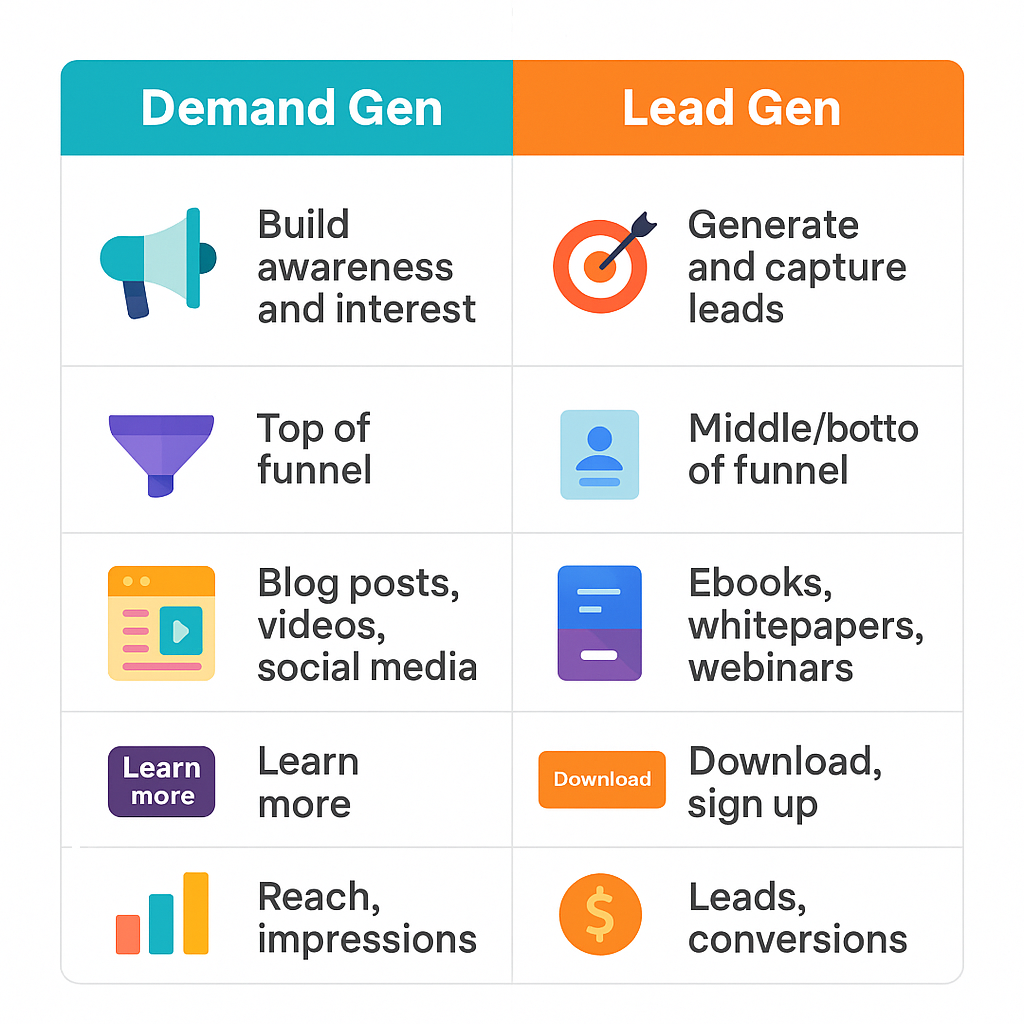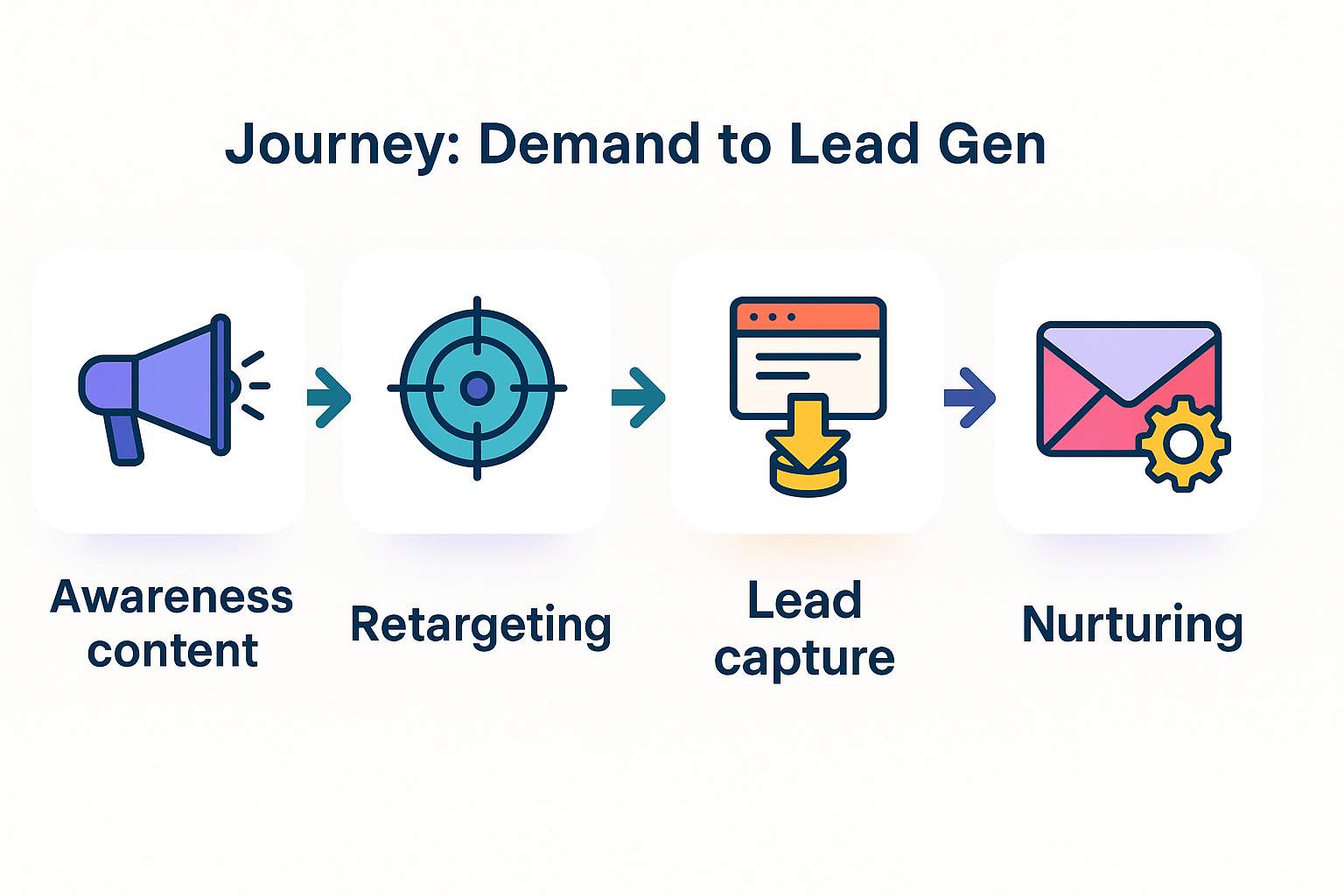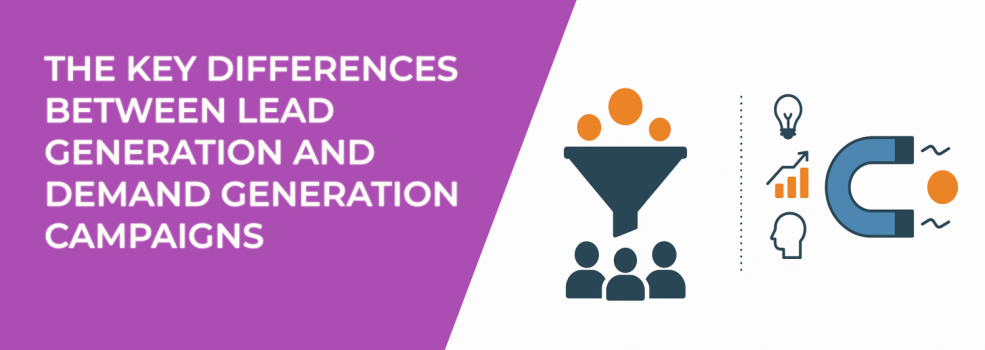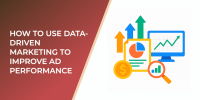Marketers love buzzwords. But two of the most misunderstood? Lead generation and demand generation.
They often get lumped together, but if you treat them the same, you're likely burning ad budget or collecting the wrong audience. These are two distinct strategies, and the sooner you understand their differences, the faster you'll start generating not just more leads, but the right ones.
Let's dig into the key differences between these two essential marketing pillars — and how you can use both for smarter, more profitable campaigns.
What Is Demand Generation?
Demand generation is the process of building interest and awareness in your product, service, or solution before the buyer is ready to make a decision. It's the art of creating curiosity and laying the groundwork for future engagement.
Unlike lead gen, which seeks direct conversions, demand gen focuses on value-driven education and building brand trust over time. The content in these campaigns is designed to inform, entertain, or challenge the way your audience thinks about a problem.
You’re not asking for an email address. You’re offering something genuinely useful, no strings attached.
Tactics commonly used in demand gen campaigns include:
-
Educational content, such as blog posts, industry explainers, how-to articles, and opinion pieces.
-
Video content, like YouTube explainer videos, behind-the-scenes brand stories, and quick tips.
-
Organic and boosted social posts that spark engagement or shares without pushing for a conversion.
-
Expert interviews or webinars featuring thought leaders in your industry.
-
Podcast episodes or downloadable audio guides that deliver value while building brand recognition.
For example, let’s say you’re introducing a new AI tool for e-commerce marketers. A demand gen campaign might include:
-
A blog post on the best AI text and image generators,
-
A short video explaining common pain points in content production,
-
And organic LinkedIn posts showcasing AI use cases from real brands.
You’re not selling. You’re teaching, showing, and inspiring.
This approach builds long-term brand affinity. So when your audience is ready to solve the problem, they already trust you to help them do it.
What Is Lead Generation?
Lead generation is the practice of capturing information from potential customers in exchange for something valuable. You’re moving people from passive interest to active prospects by offering a compelling reason to share their contact details.
Lead gen campaigns are more direct. You’re offering something specific — and asking for something in return.
Common lead gen tactics include:
-
Gated content, such as downloadable guides, checklists, case studies, and whitepapers.
-
Lead forms on landing pages or within Facebook/Instagram Lead Ads.
-
Retargeting campaigns that serve lead magnets to users who have previously interacted with your brand.
-
Free tools or templates, where users must opt in to access them.
-
Demo or trial requests that connect users directly with your product or sales team.
Say you're a B2B software company. A typical lead gen flow might include:
-
A blog post about optimizing ad campaigns (part of demand gen).
-
Retargeting visitors from that blog with a free downloadable checklist.
-
Offering a 15-minute consultation via Facebook Lead Ads.
It’s more transactional, yes. But only when the timing is right.
One of the most common mistakes marketers make is jumping into lead gen too soon. You create a shiny new eBook, launch a lead form, and wonder why your CPL is so high. Spoiler: cold audiences aren’t ready to convert yet. You skipped the warm-up phase.
Need more help with optimizing your Facebook lead funnels? This guide on how to create a lead magnet funnel with Facebook Ads is a must-read.
Demand Gen vs. Lead Gen: What Really Sets Them Apart?
Instead of thinking of them as opposites, it helps to view them as different parts of the same funnel.
Demand generation is what happens before a user is even in the market. It brings them into your orbit. Lead generation kicks in after they’ve shown signs of interest or awareness. It’s the bridge between brand curiosity and real action.

Here’s a clearer breakdown without using tables:
-
Funnel Stage: Demand gen lives at the top; lead gen focuses on the middle and bottom.
-
Content Style: Demand gen content is open access and educational. Lead gen content is usually gated and highly specific.
-
Goals: Demand gen aims to build trust and awareness. Lead gen aims to capture leads and move them toward a conversion.
-
Examples: Demand gen includes blog posts, social engagement, and value-driven videos. Lead gen includes PDF downloads, newsletter signups, or demo requests.
-
Metrics: For demand gen, look at impressions, time on site, and video watch time. For lead gen, measure form submissions, CPL, and conversion rate.
How to Strategically Combine Both Approaches
High-performing marketers understand that demand generation fuels lead generation.

One doesn’t work well without the other. Here’s how to blend both strategies into a cohesive campaign:
1. Use Awareness Campaigns to Educate First
Start by driving traffic to top-of-funnel content. These could be blogs, videos, or infographics that help your audience understand the problem you solve. For instance, this article on Why You See 'Ad Set May Get Zero' on Facebook is a perfect awareness piece. No pitch, just insight.
2. Retarget with Lead Magnets
After someone engages with your content, retarget them with more focused lead gen offers. Think: eBooks, webinars, or checklists. Make it relevant to the content they just consumed.
Example: If someone watches your full video about targeting issues, you could follow up with a lead magnet like a "Facebook Targeting Checklist for 2025."
3. Segment Your Audiences Intelligently
Don’t treat all visitors the same. Use Facebook Custom Audiences to:
-
Retarget visitors who spent over 30 seconds on your landing page.
-
Create lookalike audiences based on your most engaged email subscribers.
-
Segment by video engagement (e.g., 50%+ watched).
To get started, explore Facebook Ad Targeting 101.
4. Match Campaign Objectives to Funnel Stage
Use the right campaign objectives for each tactic:
-
For demand gen, use Awareness, Reach, or Video Views.
-
For lead gen, use Lead Generation, Conversions, or Messenger.
To ensure your campaigns don't stall, learn how to exit the Facebook learning phase quickly.
When to Focus on Lead Gen vs. Demand Gen
You might be wondering: where should I put my budget?
Here's a framework to help you decide:
-
New brands or products: Start with demand generation. You need to build trust and awareness before asking for contact details.
-
Established brands: If you already have traffic and engagement, start layering in lead gen campaigns to drive measurable growth.
-
High CPLs? If your cost per lead is rising, that may signal you're pushing conversion offers to a cold audience.
-
Strong audience education? If you've done the demand gen work and your audience is familiar with your value, then it's time to move into lead generation mode.
Think of it as a dance. Demand gen leads, lead gen follows.
Final Thoughts
Lead generation and demand generation are not competing strategies. They are complementary forces. When balanced correctly, they build a marketing engine that moves your audience from awareness to action.
Don't rush to collect emails without offering value first. Create curiosity. Earn trust. Then ask for the lead.
Want more insights on how to turn demand into conversion? Explore this guide to high-quality Facebook lead generation and build campaigns that convert at every stage of the funnel.

